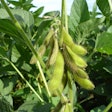
The oilseed crush industry has undergone a remarkable transformation over the past decade, significantly impacting its relationships with grain elevators and the feed industry. During a education session at GEAPS Exchange 2025, John Mulholland, General Manager at N. Hunt Moore and Associates, Inc., provided a comprehensive overview of these changes and their far-reaching implications.
Mulholland emphasized the industry's explosive growth, stating, "In my 45 years in the industry, I've never seen anything like this expansion, ever." This growth is evidenced by the projected increase in U.S. soybean crushing capacity, which is expected to reach over 9 million bushels per day by 2027-2028 if all plants operate at full capacity.
The driving force behind this expansion is the increasing demand for renewable fuels. Mulholland noted, "50% of soybean oil now goes into food, which we eat, and 49% is in fuels. That's where all this crush is going." This shift represents a significant change from a decade ago when oil exports were the industry's lifeblood.
The relationship between crush plants and grain elevators has evolved in tandem with this growth. Crush plants now place a premium on quality, with Mulholland highlighting key factors: "Protein, moisture, foreign material, oil content, damage, size. We do not like rats, cats, and shotgun shells." This emphasis on quality has led to closer collaboration between elevators and crush plants to ensure optimal raw material for processing.
The feed industry has also been significantly impacted. With the increase in crush capacity, there's a projected surplus of soybean meal. Mulholland explained, "We really need higher inclusion rates of soybean meal in the rations, and it really has to be plus or minus 15% versus what we're doing today to cover that demand."
Looking to the future, the industry faces both opportunities and challenges. The number of U.S. crush plants is projected to increase from 61 in 2023 to 75 by 2027, a 23% rise. However, this rapid expansion raises questions about market saturation and the need for continued innovation in product utilization.
Technological advancements are playing a crucial role in the industry's evolution. Mulholland highlighted emerging technologies such as online analysis and small-scale power generation, which are improving efficiency and sustainability in crush plants.
As the oilseed crush industry continues to evolve, its interconnections with grain elevators and the feed sector will likely deepen further. The coming years promise continued growth and innovation, driven by renewable fuel demand and technological advancements, reshaping the agricultural landscape for decades to come.
.jpg?auto=format%2Ccompress&crop=faces&fit=crop&h=48&q=70&w=48)

















